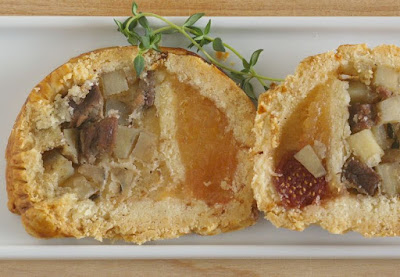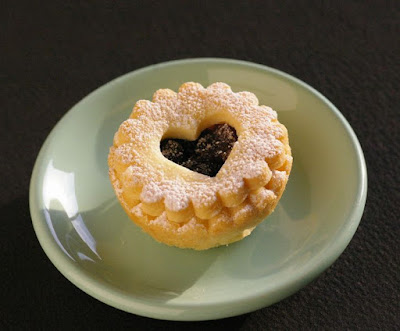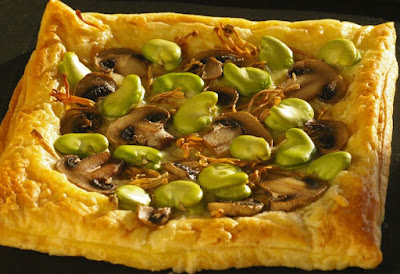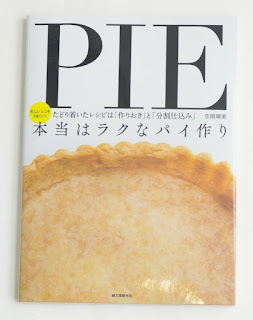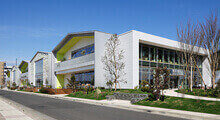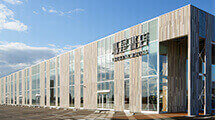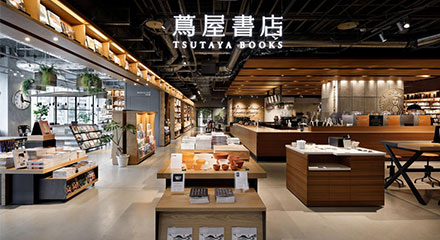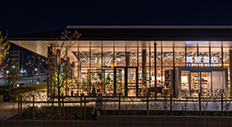The pie is warm.
▲ (From the left) "Open Pie", "Learn by yourself: Crunchy, Crunchy! Delicious Pie", "The History of Pie", "The Really Easy Way to Make Pie"
I would say there are about three types of pie.
American pie, like apple pie
British pie, similar to mince pie
French pie like millefeuille
There is only one thing that matters
Use cold butter
American pie, like apple pie
British pie, similar to mince pie
French pie like millefeuille
There is only one thing that matters
Use cold butter
Make the dough little by little
All you need to make pie crust is butter, flour, and water.
◎『The recipe that works best for busy people is "preparation" and "split-preparation"
Making pie is actually easy"
(Author: Harumi Kuga, Published by Seibundo Shinkosha, 1,300 yen (excluding tax))
Refrigerate the ingredients and then blend in a food processor.
All you need to make pie crust is butter, flour, and water.
◎『The recipe that works best for busy people is "preparation" and "split-preparation"
Making pie is actually easy"
(Author: Harumi Kuga, Published by Seibundo Shinkosha, 1,300 yen (excluding tax))
Refrigerate the ingredients and then blend in a food processor.

▲ In this book, we use soft flour (violet),
I use unsalted butter (butter without salt) and water.
Fold the dough 3 to 4 times and you'll have a pie crust that can be frozen for 30 days.
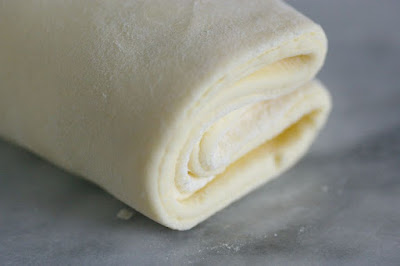
▲The top is the pie crust. If you want to store the crust, freeze it! It can be refrigerated for up to 2 days.

▲Simmered apples and milk chocolate bits stuffed into a baked hand pie.
It's even more delicious with vanilla ice cream.
The apple pie in the top left of the photo is filled with sweet stewed apples.
The author studied French cuisine in the UK and incorporates the best of both countries when it comes to pie dough, proposing recipes that can be made on a daily basis at home.
Even if you don't have a lot of time, making a pie will be easy if you save up one task a day and finish it when you're ready to eat it.
Pies used to be lunch boxes
Pies used to be lunch boxes
In the old days in England, pies "served the same function as a heat-resistant vessel" and were "portable storage containers".
In other words, it was a container for baking in a kamado (oven) and also a lunch box. Here is a book that gives a comprehensive overview of the history of pies.
◎ "The History of Pi"
(Author: Janet Clarkson, Translated by Madoka Takeda, Published by Hara Shobo, 2,000 yen (excluding tax))
The recipe for shortcrust pastry calls for 2 parts flour to 1 part butter, with a little cold water added to bind it.
British flour is mainly about 10% protein, so I tried a half-and-half mix of weak flour and strong flour.
It is also interesting to note that some of England's famous dishes were born from the fact that in medieval England, butter was considered food for the poor, while the wealthy preferred lard.
● French pies are like pies
This is a valuable book that carefully teaches you the joy of making pies.
This is a recipe for French pie crust.
◎『Learn by yourself! Crunchy, crunchy! A delicious pie that will keep coming!"
(Written by Toru Yumita and Machiko Shiina, planned and published by Ile Pleu sur la Seine, 2,700 yen (excluding tax))
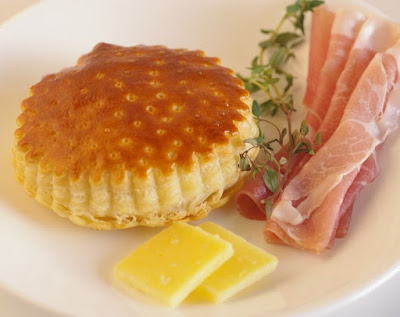
The pie crust in Chef Yumita's recipe is very light and delicious on its own.As Chef Yumita says, "Making pie is a joy," making pie is a joy from the time you make it, to the time you eat it, to the time you wonder whether to have a second helping.
The recipes from the famous French pastry shop, Ile Plou sur la Seine, are valuable in that they teach people how to make "well-thought-out pies" at home, using "precise, scientific thinking."
●10-minute pie using frozen pie dough
Some books suggest that you should leave the pie crust to frozen products and just enjoy delicious pie.
◎『All you need is frozen pie dough! Open pie"
(Author: Asumi Nitta, Published by Daiwa Shobo, 1,200 yen (excluding tax))
I was happy to hear that "In this book, the pie dough is used as is, without being rolled out."
The author has named the "tarte flambée" (yeast dough) from the Alsace region of France "open pie" (made with frozen pie dough).
This book is packed with recipes that are easy to make and taste great as well as look great.
Using frozen pie dough containing only flour, butter, and salt will result in a taste that is just like homemade pie dough.
●Hot water pie dough
There's also a fun recipe that flips the principle of chilling all pie crust ingredients.
◎『American local sweets"
(Author: Akiko Hara, Published by PARCO Publishing, 1,600 yen (excluding tax))
One of the pie crusts that the author chose, "which could be more popular," is "hot water pie crust," which can be made regardless of temperature.
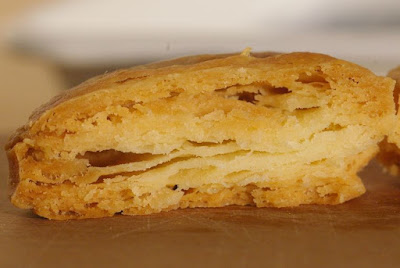

In this book, the pies are made using "half weak flour and half strong flour" or "all-purpose flour or semi-strong flour."
The author writes that boiling water puff pastry "goes well with meat pies such as chicken," "if you use butter," and "also goes well with sweet fillings."
The aforementioned "The History of Pie" also includes a recipe for "pie dough made with hot water," which it says is "suitable for rich meat pies and pasties."
Easy pies, historical pies, store-bought pies, no-cook pies, unexpected pies...
These pies are fun to read about and fun to make.
************
[Recommended books]
1. "The Really Easy Way to Make Pie: The Recipe I Found Out is "Preparation" and "Separate Preparation""(Author: Harumi Kuga, Published by Seibundo Shinkosha)
1,300 yen (excluding tax)
・Online store is here
2. "The History of Pi"
(Author: Janet Clarkson, Translated by Madoka Takeda, Published by Hara Shobo)
2,000 yen (excluding tax)

・Online store is here
3. "Learn by yourself: Crunchy, Crunchy! A delicious pie that will blow your mind!"
(Author: Toru Yumita and Machiko Shiina, Published and planned by Ile Pleu sur la Seine)
2,700 yen (excluding tax)
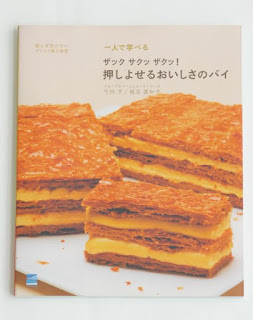
・Online store is here
4. "All you need is frozen pie dough! Open pie"
(Author: Asami Nitta, Published by Daiwa Shobo)
1,200 yen (excluding tax)
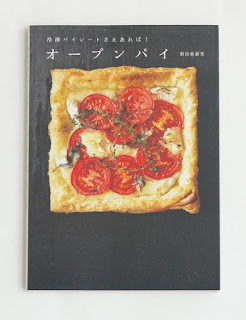
・Online store is here
5. "American Traditional Sweets"
(Author, Akiko Hara, published by PARCO Publishing)
1,600 yen (excluding tax)
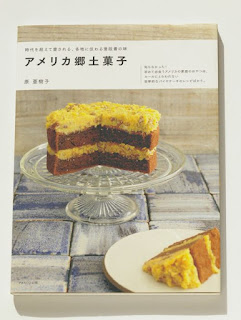
・Online store Here
************
Making your own pie will make a gorgeous display on your plate.
Best of all, the freshly baked pie is warm.
Enjoy pies with different pie crusts depending on the season.
Culinary Concierge
Sawa Mineko
In other words, it was a container for baking in a kamado (oven) and also a lunch box. Here is a book that gives a comprehensive overview of the history of pies.
◎ "The History of Pi"
(Author: Janet Clarkson, Translated by Madoka Takeda, Published by Hara Shobo, 2,000 yen (excluding tax))
A recipe for British pie dough, shortcrust pastry, is introduced at the end of the book as "a basic dough that can be applied to most pies."
I had a beef and vegetable main dish with assorted fruits for dessert.
A layer of pie crust is placed between the two flavors to prevent them from mixing.
When you recreate it, you can clearly see that the pie crust was originally a lunch box.▲A portable lunchbox pie called a "pasty."
The photo above shows a cross-section of a hand pie-shaped "pasty" sliced straight across.
I had a beef and vegetable main dish with assorted fruits for dessert.
A layer of pie crust is placed between the two flavors to prevent them from mixing.
The recipe for shortcrust pastry calls for 2 parts flour to 1 part butter, with a little cold water added to bind it.
British flour is mainly about 10% protein, so I tried a half-and-half mix of weak flour and strong flour.
▲Homemade mincemeat (dried fruit soaked in spices and alcohol),
I made mince pies by filling shortcrust pastry.
It is also interesting to note that some of England's famous dishes were born from the fact that in medieval England, butter was considered food for the poor, while the wealthy preferred lard.
● French pies are like pies
This is a valuable book that carefully teaches you the joy of making pies.
This is a recipe for French pie crust.
◎『Learn by yourself! Crunchy, crunchy! A delicious pie that will keep coming!"
(Written by Toru Yumita and Machiko Shiina, planned and published by Ile Pleu sur la Seine, 2,700 yen (excluding tax))

Baked in a household microwave oven.
Following Chef Yumita's advice that "flour sold at supermarkets is enough,"
I used strong flour and weak flour from the supermarket in the recipe.
I used strong flour and weak flour from the supermarket in the recipe.
The pie crust in Chef Yumita's recipe is very light and delicious on its own.
The recipes from the famous French pastry shop, Ile Plou sur la Seine, are valuable in that they teach people how to make "well-thought-out pies" at home, using "precise, scientific thinking."
●10-minute pie using frozen pie dough
Some books suggest that you should leave the pie crust to frozen products and just enjoy delicious pie.
◎『All you need is frozen pie dough! Open pie"
(Author: Asumi Nitta, Published by Daiwa Shobo, 1,200 yen (excluding tax))
I was happy to hear that "In this book, the pie dough is used as is, without being rolled out."
The author has named the "tarte flambée" (yeast dough) from the Alsace region of France "open pie" (made with frozen pie dough).
▲To make it delicious even if you take the time to cook, I washed the broad beans with water and toasted them in the toaster for 10 minutes.
It is topped with enoki mushrooms that have been dried in a tray for several days, pizza cheese, and mushrooms, and then baked.
Dried enoki mushrooms reduce the cheese and add flavor and nutrients.
It is topped with enoki mushrooms that have been dried in a tray for several days, pizza cheese, and mushrooms, and then baked.
Dried enoki mushrooms reduce the cheese and add flavor and nutrients.
This book is packed with recipes that are easy to make and taste great as well as look great.
Using frozen pie dough containing only flour, butter, and salt will result in a taste that is just like homemade pie dough.
●Hot water pie dough
There's also a fun recipe that flips the principle of chilling all pie crust ingredients.
◎『American local sweets"
(Author: Akiko Hara, Published by PARCO Publishing, 1,600 yen (excluding tax))
One of the pie crusts that the author chose, "which could be more popular," is "hot water pie crust," which can be made regardless of temperature.

▲Cross-section of hot water pie crust.
Although it is thin, it forms a proper layer.

▲The pie is baked to perfection and two types of grapefruit (ruby and white) are arranged on top.
We have combined yogurt with honey (acacia), which goes well with it.
In this book, the pies are made using "half weak flour and half strong flour" or "all-purpose flour or semi-strong flour."
The author writes that boiling water puff pastry "goes well with meat pies such as chicken," "if you use butter," and "also goes well with sweet fillings."
The aforementioned "The History of Pie" also includes a recipe for "pie dough made with hot water," which it says is "suitable for rich meat pies and pasties."
Easy pies, historical pies, store-bought pies, no-cook pies, unexpected pies...
These pies are fun to read about and fun to make.
************
[Recommended books]
1. "The Really Easy Way to Make Pie: The Recipe I Found Out is "Preparation" and "Separate Preparation""
1,300 yen (excluding tax)
・Online store is here
2. "The History of Pi"
(Author: Janet Clarkson, Translated by Madoka Takeda, Published by Hara Shobo)
2,000 yen (excluding tax)

・Online store is here
3. "Learn by yourself: Crunchy, Crunchy! A delicious pie that will blow your mind!"
(Author: Toru Yumita and Machiko Shiina, Published and planned by Ile Pleu sur la Seine)
2,700 yen (excluding tax)

・Online store is here
4. "All you need is frozen pie dough! Open pie"
(Author: Asami Nitta, Published by Daiwa Shobo)
1,200 yen (excluding tax)

・Online store is here
5. "American Traditional Sweets"
(Author, Akiko Hara, published by PARCO Publishing)
1,600 yen (excluding tax)

・Online store Here
************
Making your own pie will make a gorgeous display on your plate.
Best of all, the freshly baked pie is warm.
Enjoy pies with different pie crusts depending on the season.
Culinary Concierge
Sawa Mineko


